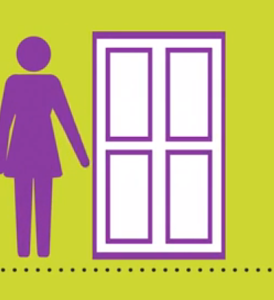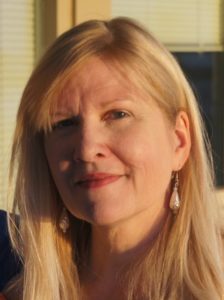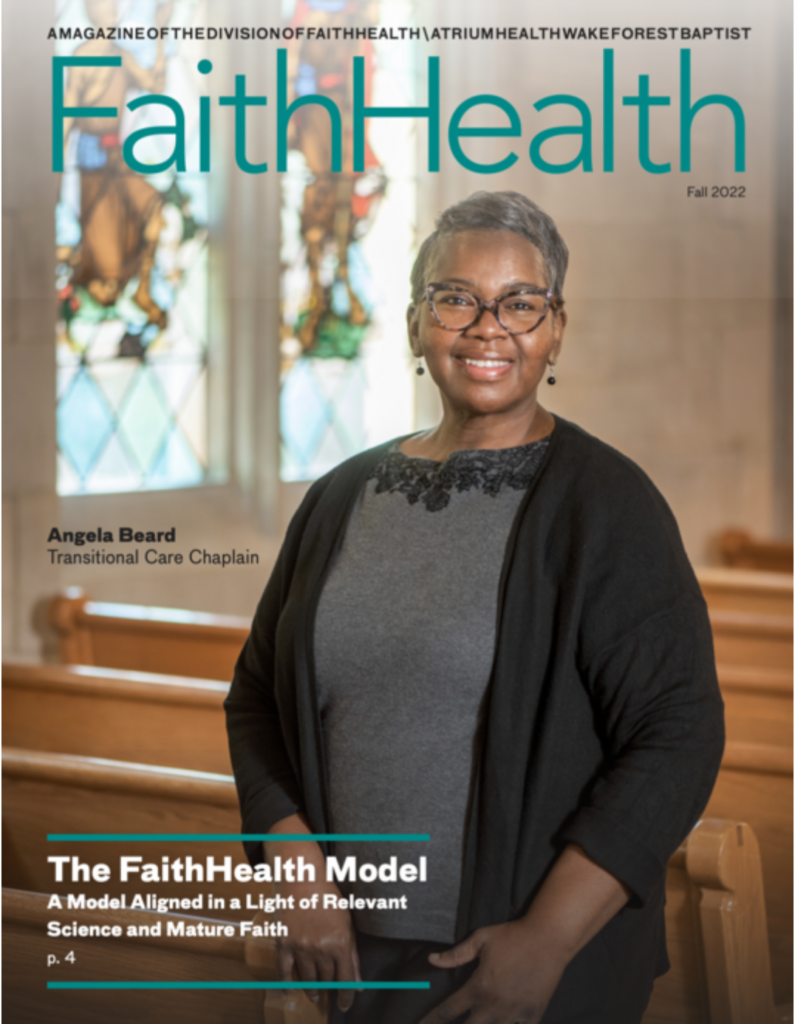What is FaithHealth NC?
Interview by Tom Peterson
Gary Gunderson, M.Div., D.Min., D.Div., is Vice President for Faith and Health at Wake Forest Baptist Medical Center. Gary is known for more than two decades of creative work in the field of faith and public health initially at The Carter Center and Emory School of Public Health. In Memphis his ideas found ground through 600 congregational partners with Methodist Le Bonheur Health. He is a frequent speaker and author or co-author of several books, including Religion and the Health of the Public, Leading Causes of Life, Boundary Leaders and Deeply Woven Roots.
Teresa Cutts, Ph.D., is Assistant Research Professor at Wake Forest School of Medicine, Social Sciences and Health Policy. Teresa Cutts, or “TC,” has been a leader in facilitating over 25 Community Health Assets Mapping Partnership workshops in both the US and Africa, since 2007. She was lead facilitator of NC mapping workshops, ranging from Forsyth to Davidson to Randolph counties. She is the co-editor of Stakeholder Health: Insights from New Systems of Health.
FaithHealth: First, what is FaithHealth NC?
 Gunderson: FaithHealth NC is the name of the coordinated, systematic effort on behalf of the FaithHealth division of Wake Forest Baptist Medical Center to bring into being and sustain the relationship between the clinical operation of the medical center, the spiritual care, the community engagement staff, the community health workers, our congregational partnerships, our relationship with more than 2,000 clergy who are visiting patients, and the people who work for not-for-profit organizations that is also present in the 19 counties that are served by the medical center.
Gunderson: FaithHealth NC is the name of the coordinated, systematic effort on behalf of the FaithHealth division of Wake Forest Baptist Medical Center to bring into being and sustain the relationship between the clinical operation of the medical center, the spiritual care, the community engagement staff, the community health workers, our congregational partnerships, our relationship with more than 2,000 clergy who are visiting patients, and the people who work for not-for-profit organizations that is also present in the 19 counties that are served by the medical center.
This is building toward an expectation that if there’s a Wake Forest Baptist Medical Center presence in a community, you would expect to see these other relationships in a working relationship with each other. At this point, you can see that in our immediate Forsyth County area or in our Lexington hospital. You can see it emerging in our other satellite hospitals, but that’s the goal we’re working towards. It includes an alignment of staff, clinical professionals, community-based workers, and partnerships that we do not employ but with whom we work. It’s our institution’s approach to that get people to right door, at the right time, ready to be treated, not alone that actually is real in thousands of lives.
Because of Wake Forest Baptist Medical Center’s historical relationship with the North Carolina Baptist Convention, you can see that in the most traditional of our religious partners, the most highly developed form of this collaboration with clergy, congregations, and the denominational structure.
FaithHealth: Are hospitals other than Wake Forest Baptist Medical Center involved?
Gunderson: FaithHealth NC is the relationships that the medical center, itself, initiates and tries to sustain. In the service areas where we work, it’s common for patients who work with our community-based staff, and our volunteers, and our clergy to be present at other hospitals as well. We don’t run FaithHealth NC directly in collaboration at an administrative level with other hospitals. Those hospitals may be seeing the benefit of our work – we intend it to be available as a community asset – but we don’t actually sit down and have planning meetings with competing hospitals.
FaithHealth: Who makes all of this work happen?
Cutts: A lot of people, but those who are outside of our hospital walls are really key – the volunteers, connectors and supporters who are in the community. The supporters of health are a hybrid of community health workers and people who sort of triage community care. They work primarily in underserved communities, helping people with needs like transportation, food, medication expenses, and other types of support associated with “social determinants of health.” Their goal is to triage people to other resources, not just provide resources themselves.
Connectors are not hospital employees. They work up to ten hours a week and are either embedded in a health network or a denomination, or they might work in a given neighborhood or county. Their job is to triage people to immediate resources, although some of them do more direct service, especially in the rural areas. Out of sheer necessity, our two connectors in McDowell County do a lot of transportation and hands-on direct service themselves.
FaithHealth: What are FaithHealth Fellows?
Gunderson: A FaithHealth Fellow is someone recognized by another organization, usually a hospital, who is designated by that person with leadership and developing the FaithHealth strategy in their local setting. They have been nominated by their supporting organization to be in a Fellowship – a two-year experience – that we lead. They are working for someone else, and we provide training and bring them into a relationship with each other. It’s a Fellowship that strengthens their already recognized capacity to be a leader in their organization or community.
 We developed this at the request of the Kate B. Reynolds Foundation, which was interested in seeing the FaithHealth strategy spread across the counties most marked by poverty in the western part of the state. Since then, we have appointed FaithHealth Fellows in different parts of the state as well. These are all leaders who are working in tough, mostly rural communities bringing the strength of their organizations to bear on the challenges.
We developed this at the request of the Kate B. Reynolds Foundation, which was interested in seeing the FaithHealth strategy spread across the counties most marked by poverty in the western part of the state. Since then, we have appointed FaithHealth Fellows in different parts of the state as well. These are all leaders who are working in tough, mostly rural communities bringing the strength of their organizations to bear on the challenges.
FaithHealth: What are the origins of FaithHealth NC?
Gunderson: When I was recruited to Wake Forest in 2012, the institution had an explicit hope that the work that had developed in Memphis and became well known could be adapted into the North Carolina context. So, it was an explicit expectation of my coming here that I would evoke a similar sort of ground-model of aligning the religious assets of the community with the public health and health care assets in the community. Originally, we had thought that it would look more explicitly structurally like the model in Memphis.
What has emerged is the North Carolina Way of doing that. This includes both a way of doing things and a very different array of religious and health assets. We knew it would be different from Memphis, but we didn’t realize that it would be so different. So, part of the North Carolina Way is that each of the catchment areas in which the hospitals operate have a distinctive personality and a different structural relationship between the hospital and the community, so across the state we see many different ways.
FaithHealth: An important part of what FaithHealth NC does is listen to, and partner with, organizations and individuals in the communities.
 Cutts: Yes, for example, we listened to Hispanic people about how hard it was for undocumented people to get medication and appropriate health care access because they didn’t have a picture ID. They also had difficulty when coming into a hospital. So FaithHealth began convening leaders from both the hospital systems to engage with a Greensboro group to help. Now we’ve had four ID drives and many hundreds of people have benefitted.
Cutts: Yes, for example, we listened to Hispanic people about how hard it was for undocumented people to get medication and appropriate health care access because they didn’t have a picture ID. They also had difficulty when coming into a hospital. So FaithHealth began convening leaders from both the hospital systems to engage with a Greensboro group to help. Now we’ve had four ID drives and many hundreds of people have benefitted.
Gunderson: This goes back to a disciplined strategy and a way of opening our eyes to the group’s social realities. The key is looking for the tangible and intangible assets on the ground. When you do that, you’ll also find the challenges and the problems, many of which may be submerged. If you go out and look for problems, you’ll never find the assets. So, going out and asking in Spanish about the assets of the community surfaced the problem and did so in light of the relationships of trust, and media, and small businesses, and congregations that were relevant to that problem.
The second discipline is to respond to what you’ve seen and learned. That process can’t be known before mapping the assets. Because a lot of trust is gained during the process, we then can find a way to bring those assets in alignment with each other so we can create something that looks like an answer.
 That story is still under construction because it’s still alive. We’re finding more and more implications of structure and trust that emerge in those relationships. It’s now expanded to include not just the clinical partners – both hospitals that compete with each other – but also law enforcement, city agencies, public health, even Homeland Security, which was brought into a working relationship around this.
That story is still under construction because it’s still alive. We’re finding more and more implications of structure and trust that emerge in those relationships. It’s now expanded to include not just the clinical partners – both hospitals that compete with each other – but also law enforcement, city agencies, public health, even Homeland Security, which was brought into a working relationship around this.
FaithHealth: It’s kind of messy, right? Some things work, some don’t. What does it mean that this is not a simple, plug-and-play process?
Cutts: It’s an ongoing, dynamic process. Once you start that relationship and you build it, you want to nurture trust. You have to keep that dialogue going over time. You build webs of trust. That’s how you signal to the community that it’s a new day, in terms of the way that hospitals and other institutions are relating to them.
Gunderson: We believe that a person’s health comes out of all of the social relationships that define the life of that individual and that the point of engagement for health is not just that autonomous individual. You can engage the social networks around that person, so it’s critical for us. We don’t think the neighborhood just has a lot of sick people in it, we think the neighborhood itself is dealing with traumas and challenges that can be addressed.
We don’t think that any individual or neighborhood is defined by their illness. They are, themselves, the most important asset in their own story of health. So, you can engage a neighborhood and or an individual as being on a journey of health, not just presenting a particular set of things that have gone wrong. No matter how troubled the neighborhood, it’s alive and it’s capable of being an agent in its own future. The neighborhood is not just waiting for the hospital to come with a big bag of pills. So part of the hospital’s responsibility is to work with what’s trying to happen that moves towards health.
FaithHealth: You talk about getting to the right door and so on. Can you tell us of someone who this helped?
Cutts: A coordinator recently worked with a woman in her forties who had some serious cardiac problems. She was being discharged from the hospital, but because she couldn’t work she had lost her home and had been put up in a cheaper apartment with no furniture. So, despite her heart condition, she was sleeping on the floor. The FaithHealth people got her not just one bed but two twin beds because she has a young son who lives with his father and can now spend the night with her. This kind of story happens 20 times a week.
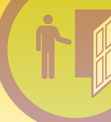 FaithHealth: Isn’t that the heart of it, people being helped?
FaithHealth: Isn’t that the heart of it, people being helped?
Gunderson: Yes, it’s individuals being helped not by one heroic clinician, but by bringing them into a relationship with a more complex set of things that they actually need. They may not even know how to ask for what they need, but you add up all of those relationships and then that individual gets what they need.
We often see that individual turn from being a patient in need to being a partner for somebody else. This is partly why the story of FaithHealth NC, down to the neighborhood level or even in one person’s life, keeps getting more and more complex. That’s a sign of a living phenomenon – that it gets healthier and healthier. So, frequently patients turn into healers. That’s really what we’re looking for.
FaithHealth: Can you talk about trainings and educational events?
Cutts: There’s a broad array of training. We have monthly and quarterly Connector trainings with people from across the state. They tell us what they need to learn and teach us as we go. Supporters meet weekly and for monthly “grand rounds” with people from across the division. We offer classes, such as Mental Health First Aid or Community Resiliency Training. We also offer caregiver training, which is the basic training for getting people to the right door, at the right time, ready to be treated, and not alone. Putting people together in the room is the key. They teach us. The power comes from connecting people and networking. And twice a year we hold a day-long Learning Forum that explains the work and all the different roles. North Carolinians attend as well as people from health systems across the country.
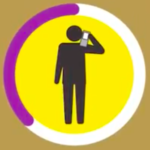 FaithHealth: What kind of scale are we talking about?
FaithHealth: What kind of scale are we talking about?
Cutts: FaithHealth NC is everyone who’s involved, from the broader networks, to the hospitals, to the people who work with us as volunteers in the community, the connectors, the supporters – it’s the whole ensemble.
Gunderson: In terms of numbers, you can begin with the 2,024 clergy who visit our patients in the hospital.
Cutts: Then, we have 32 connectors, six supporters, 14 Kate B. Reynolds Fellows who work across the state. We have 348 unique volunteers who have provided more than 5,000 hours of volunteering in terms of training and over 2,000 hours of caregiving service.
FaithHealth: What opportunities are there for people who want to get involved?
Cutts: People could volunteer, help people get to the resources we’ve talked about. They could come to any of the trainings; they’re free and open to the public. We’re constantly on the lookout for household goods and things people may need. We’re also always challenged on transportation, particularly for medical issues.
Gunderson: Dr. McConnell, then CEO of Wake Forest Baptist Medical Center, was clear from the beginning of this FaithHealth strategy that it was not captive within the Wake Forest Baptist brand. So, we designed it from the beginning for cooperating health systems, or those who compete with us, to feel free to take any of the intellectual capital, any of the process developments, any of the volunteers, any of the congregations we strengthen. They can integrate all of those assets into their system, as well.
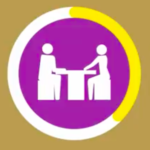 So, to some extent, this is a fulfillment not just of one corporate entity called a Medical Center, but in some ways, is a fulfillment of the original founding vision of the North Carolina Baptists in 1922. They imagined a network of healthcare systems across the state that would be delivering twentieth century medicine into the lives of the entire state. Well, it turned out that they only created one Baptist hospital, but now that one Baptist hospital is, because of that vision, charged to be open-handed and generous with everything we know that could be relevant to the health of the people of North Carolina.
So, to some extent, this is a fulfillment not just of one corporate entity called a Medical Center, but in some ways, is a fulfillment of the original founding vision of the North Carolina Baptists in 1922. They imagined a network of healthcare systems across the state that would be delivering twentieth century medicine into the lives of the entire state. Well, it turned out that they only created one Baptist hospital, but now that one Baptist hospital is, because of that vision, charged to be open-handed and generous with everything we know that could be relevant to the health of the people of North Carolina.
FaithHealth: What can you say about the results of this five-year effort?
Cutts: We reached a tipping point about three years into the work. Now we’re escalating and picking up new partners farther out across the state. The work that’s being done by our connectors, volunteers, and others is growing so rapidly I can’t keep-up with it. Now, two ways to see impact are the decreasing total charges for people in our most underserved zip codes in Forsythe County and the fact that our total aggregate charity care has gone down annually since 2013.
Gunderson: The seeds have begun to sprout in the more than 25 counties we are active in as FaithHealth NC. Even in those places where we’re most deeply involved those roots have not yet penetrated way down deep. So, the early stages have been extremely encouraging, but you couldn’t look at any single one of these counties and say that it has fulfilled the imagination of God or what healthy homes could look like. So, we’re going to be at this work for a long time, but the fact is that it’s good news that these seeds are sprouting in ways that are very significant, improving hundreds if not thousands of lives.
